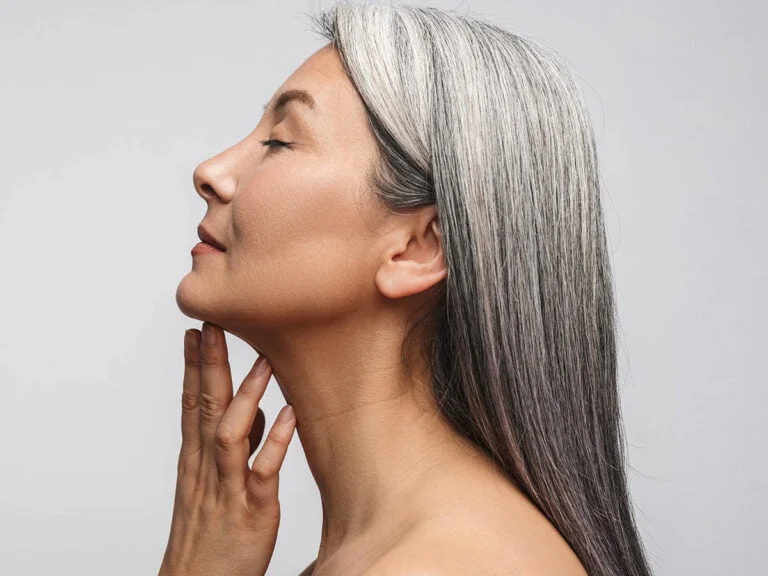What Should You Know Before Getting a Tattoo?
Tattoos have become an increasingly popular form of self-expression in modern society. What once was a practice associated with specific subcultures or professions has now become mainstream, with people from all walks of life embracing body art. While getting a tattoo can be a thrilling and meaningful experience, it is essential to be fully informed before making this permanent decision.
In this article, we will explore the crucial aspects you should consider before getting a tattoo, including the decision-making process, choosing a reputable artist, understanding the procedure, knowing the risks involved, and ensuring proper aftercare.
1. The Decision-Making Process: Why Do You Want a Tattoo?
Before you get a tattoo, it is vital to reflect on your reasons for wanting one. Tattoos are permanent, and while they can be removed or altered with laser treatments, these options are costly, time-consuming, and sometimes painful. Therefore, your decision to get a tattoo should not be taken lightly.
a. Personal Significance
Consider the significance of the tattoo you are planning to get. Many people choose tattoos that hold personal meaning, such as symbols, quotes, or images that represent important aspects of their lives. Think about what the tattoo will mean to you in the long term. Will it still hold the same significance in 10, 20, or even 50 years? It’s essential to choose a design that resonates deeply with you.
b. Aesthetic Appeal
While personal meaning is crucial, the aesthetic appeal of the tattoo should also be considered. Will the design and placement of the tattoo suit your style and preferences over time? Trends in tattoo designs come and go, so it’s wise to choose something that you genuinely like rather than something that is merely fashionable at the moment.
c. Placement and Size
The placement and size of your tattoo are also important factors to consider. Certain areas of the body may be more sensitive to tattooing, and the visibility of the tattoo should align with your lifestyle and career. For example, if you work in a conservative profession, you might want to choose a location that can be easily covered. Additionally, think about how the size of the tattoo will fit with your body’s proportions and other potential tattoos in the future.
d. Consult Others
It can be helpful to consult with others who have tattoos or seek advice from a professional tattoo artist. Hearing about their experiences can give you valuable insights and help you make an informed decision.
2. Choosing a Reputable Tattoo Artist
One of the most critical steps in getting a tattoo is choosing a reputable and skilled tattoo artist. The quality of your tattoo will largely depend on the artist’s expertise, so it’s essential to do your research.
a. Research and Reviews
Start by researching tattoo artists in your area or those who specialize in the style of tattoo you want. Look for online reviews, portfolios, and testimonials from previous clients. Social media platforms like Instagram can be valuable resources for finding and evaluating tattoo artists’ work. Pay attention to the cleanliness of their workspace, the precision of their lines, the shading, and the overall quality of their work.
b. Check for Proper Licensing
Ensure that the tattoo artist and the studio they work in are properly licensed and adhere to health and safety regulations. Tattooing involves breaking the skin, so it’s crucial that the environment is clean and sterile to minimize the risk of infection. In most places, tattoo artists are required to have specific training in health and safety procedures, so don’t hesitate to ask about their qualifications.
c. Consultation and Communication
Before committing to an artist, schedule a consultation to discuss your tattoo idea. This meeting is an opportunity to gauge the artist’s professionalism and communication skills. A good tattoo artist will listen to your ideas, offer suggestions, and be honest about what will work best for your tattoo. They should also be willing to provide a custom design based on your preferences.
d. Cost and Budget
Tattoos can be expensive, and the cost often reflects the artist’s experience and reputation. While it might be tempting to choose a cheaper option, remember that you often get what you pay for. A poorly done tattoo can lead to regret and the need for costly cover-ups or removals. It’s worth investing in a high-quality tattoo from a reputable artist.
3. Understanding the Tattoo Procedure
Getting a tattoo involves a specific process that can be both physically and emotionally demanding. Knowing what to expect can help you prepare mentally and physically.
a. The Tattooing Process
The tattooing process begins with the artist cleaning and shaving the area where the tattoo will be applied. They will then apply a stencil of the design to your skin, allowing you to see the placement before the actual tattooing begins.
Once you approve the placement, the artist will use a tattoo machine with a needle to inject ink into the dermis layer of your skin. The sensation can vary from person to person but is often described as a sharp or burning pain. The pain level will also depend on the location of the tattoo, with some areas being more sensitive than others.
The tattooing process can take anywhere from a few minutes to several hours, depending on the size and complexity of the design. It’s important to stay as still as possible during the procedure to ensure the best results.
b. Pain Management
Pain is an inevitable part of getting a tattoo, but there are ways to manage it. Some people find that taking deep breaths, listening to music, or engaging in conversation with the artist can help distract them from the discomfort. Over-the-counter pain relievers like acetaminophen can also be taken before the session, but avoid aspirin or ibuprofen, as they can thin the blood and increase bleeding.
It’s also advisable to get a good night’s sleep and eat a meal before your tattoo session. Being well-rested and having stable blood sugar levels can help you better tolerate the pain.
c. Emotional Preparation
Getting a tattoo can be an emotional experience, especially if the design holds personal significance. Some people feel a rush of adrenaline or a sense of euphoria during and after the process. It’s important to be emotionally prepared for the experience and to have a positive mindset going into it.
4. Knowing the Risks Involved
Tattoos, while generally safe when done by a professional, do come with certain risks. Being aware of these risks can help you take the necessary precautions.
a. Infection
One of the primary risks associated with tattoos is infection. Since tattooing involves breaking the skin, there is a potential for bacteria to enter the body. Signs of infection include redness, swelling, pain, and pus at the tattoo site. In severe cases, an infection can lead to fever and chills.
To minimize the risk of infection, choose a reputable tattoo artist who follows proper sterilization procedures. After getting the tattoo, follow the aftercare instructions provided by your artist to keep the area clean and protected.
b. Allergic Reactions
Some people may have allergic reactions to the ink used in tattoos. Red, yellow, and green pigments are more likely to cause allergic reactions than black ink. Symptoms can include itching, swelling, and a rash at the tattoo site.
If you have a history of allergies, it’s important to discuss this with your tattoo artist before getting a tattoo. They may suggest doing a patch test with the ink to see if you have any adverse reactions.
c. Scarring and Keloids
Improper tattooing techniques or poor aftercare can lead to scarring or the formation of keloids (raised scars). Keloids are more common in people with darker skin tones or those who are prone to scarring.
To reduce the risk of scarring, follow your artist’s aftercare instructions carefully and avoid picking at any scabs that form during the healing process.
d. Bloodborne Diseases
If a tattoo artist does not follow proper sterilization procedures, there is a risk of transmitting bloodborne diseases like hepatitis B, hepatitis C, or HIV. This risk is significantly reduced when you choose a licensed and reputable artist who uses sterile equipment.
e. Tattoo Regret
Tattoo regret is a common issue, especially if the tattoo was chosen impulsively or without proper consideration. While laser tattoo removal is an option, it is expensive, time-consuming, and can be painful.
To avoid regret, take the time to carefully consider your tattoo design and its placement. Make sure it is something you will be happy with for the rest of your life.
5. Ensuring Proper Aftercare
Aftercare is a crucial part of the tattooing process. Proper aftercare ensures that your tattoo heals correctly and looks its best.
a. Immediate Aftercare
Once your tattoo is complete, your artist will apply a bandage or plastic wrap to protect the area. This covering should be left on for a few hours to protect the tattoo from bacteria and friction.
After removing the bandage, gently wash the tattoo with mild soap and lukewarm water. Pat the area dry with a clean towel—avoid rubbing, as this can irritate the skin.
b. Moisturizing and Protection
Apply a thin layer of tattoo-specific ointment or a fragrance-free moisturizer to the tattoo. This keeps the skin hydrated and helps prevent scabbing. Avoid using petroleum-based products, as they can clog pores and trap bacteria.
During the healing process, it’s essential to keep the tattoo out of direct sunlight. UV rays can cause the ink to fade and may increase the risk of skin irritation. If you must be in the sun, cover the tattoo with clothing or use a high-SPF sunscreen once the tattoo is fully healed.
c. Avoiding Certain Activities
For the first few weeks after getting a tattoo, avoid swimming in pools, hot tubs, or natural bodies of water. These environments can introduce bacteria to the tattoo and increase the risk of infection. Additionally, avoid activities that cause excessive sweating, as this can also irritate the tattoo.
It’s important to resist the urge to pick at any scabs
or peel the skin. Let the skin naturally shed during the healing process to prevent scarring and ensure the tattoo looks its best.
d. Monitoring the Healing Process
Most tattoos take about two to four weeks to heal, depending on the size and location. During this time, it’s normal to experience some redness, itching, and mild peeling. However, if you notice any signs of infection, such as increased pain, swelling, or pus, contact a healthcare professional immediately.
Even after your tattoo has healed, it’s important to take care of it. Regularly moisturize the area to keep the skin hydrated, and use sunscreen to protect the tattoo from fading.
6. Legal and Cultural Considerations
In addition to the personal and health aspects of getting a tattoo, there are also legal and cultural considerations to keep in mind.
a. Legal Age Requirements
In many places, there are legal age requirements for getting a tattoo. The minimum age is often 18, though some regions allow minors to get tattoos with parental consent. It’s essential to check the laws in your area before scheduling a tattoo appointment.
b. Cultural Sensitivity
Tattoos can carry cultural significance, and it’s important to be respectful of this when choosing a design. For example, certain symbols or patterns may have deep spiritual or cultural meanings for specific communities. If you are considering a tattoo with cultural significance, take the time to learn about its meaning and ensure that you are honoring its origins.
c. Workplace Considerations
While tattoos have become more accepted in many workplaces, some employers may still have policies regarding visible tattoos. If you work in a conservative field or are considering a career change, think about how your tattoo might be perceived by employers. Choosing a location that can be easily covered by clothing is a good option if you are concerned about workplace acceptance.
7. Tattoo Removal and Cover-Ups
While getting a tattoo is intended to be a permanent decision, there are options for those who experience tattoo regret or wish to alter their body art.
a. Laser Tattoo Removal
Laser tattoo removal is the most common method for removing unwanted tattoos. The process involves using a laser to break down the ink particles in the skin, which are then absorbed by the body’s immune system. Multiple sessions are often required, and the effectiveness of the removal can depend on factors like the tattoo’s age, ink colors, and size.
Laser removal can be painful and expensive, so it’s essential to consider this before getting a tattoo. Additionally, some tattoos may not be entirely removable and may leave behind a faint scar or shadow.
b. Tattoo Cover-Ups
For those who do not want to go through the removal process, a tattoo cover-up may be an option. A skilled tattoo artist can create a new design that incorporates or completely covers the existing tattoo. Cover-ups can be a great way to transform a tattoo you no longer love into something that better suits your current style and preferences.
8. The Emotional and Psychological Impact of Tattoos
Tattoos are not just physical marks on the skin; they can also have a significant emotional and psychological impact.
a. Self-Expression and Identity
For many people, tattoos are a powerful form of self-expression and a way to assert their identity. The process of choosing and getting a tattoo can be empowering and affirming. It allows individuals to commemorate important events, honor loved ones, or express their values and beliefs.
b. Body Image and Confidence
Tattoos can also impact body image and confidence. Some individuals find that tattoos help them feel more comfortable in their skin, while others may struggle with regret or dissatisfaction. It’s essential to be mindful of how a tattoo might affect your self-perception and to choose a design that enhances your confidence.
c. Coping with Trauma
In some cases, tattoos can be a way to cope with trauma or loss. Memorial tattoos, for example, can provide comfort and a sense of connection to a loved one who has passed away. However, it’s important to consider whether a tattoo is the healthiest way to process your emotions. If you are dealing with significant emotional pain, it may be helpful to speak with a therapist before getting a tattoo.
Conclusion
Getting a tattoo is a deeply personal decision that should be made with careful consideration and research. By understanding the factors involved, such as the decision-making process, choosing a reputable artist, understanding the procedure, knowing the risks, and ensuring proper aftercare, you can make an informed choice that you will be happy with for years to come. Remember, a tattoo is more than just a piece of art; it is a lifelong commitment to a part of your identity. Make sure it is a decision that aligns with your values, beliefs, and long-term happiness.




